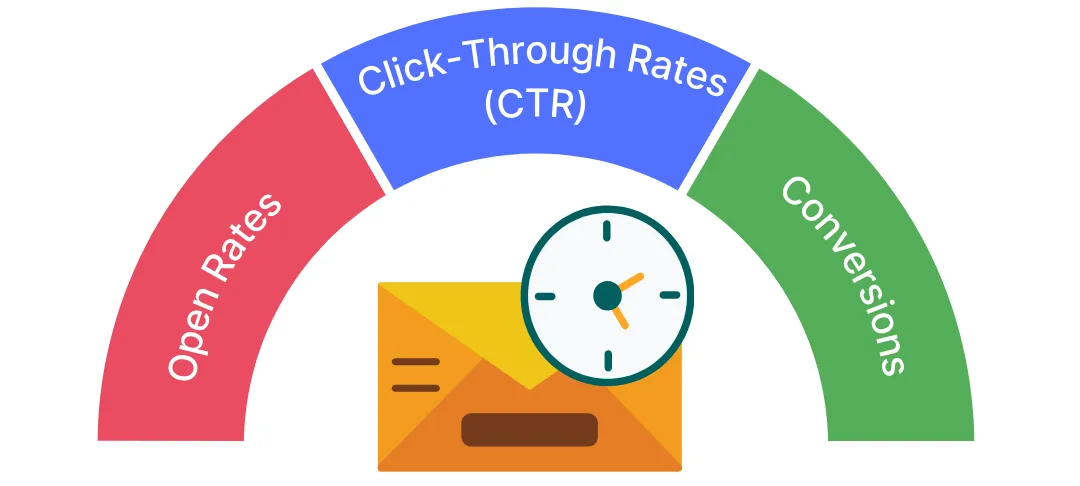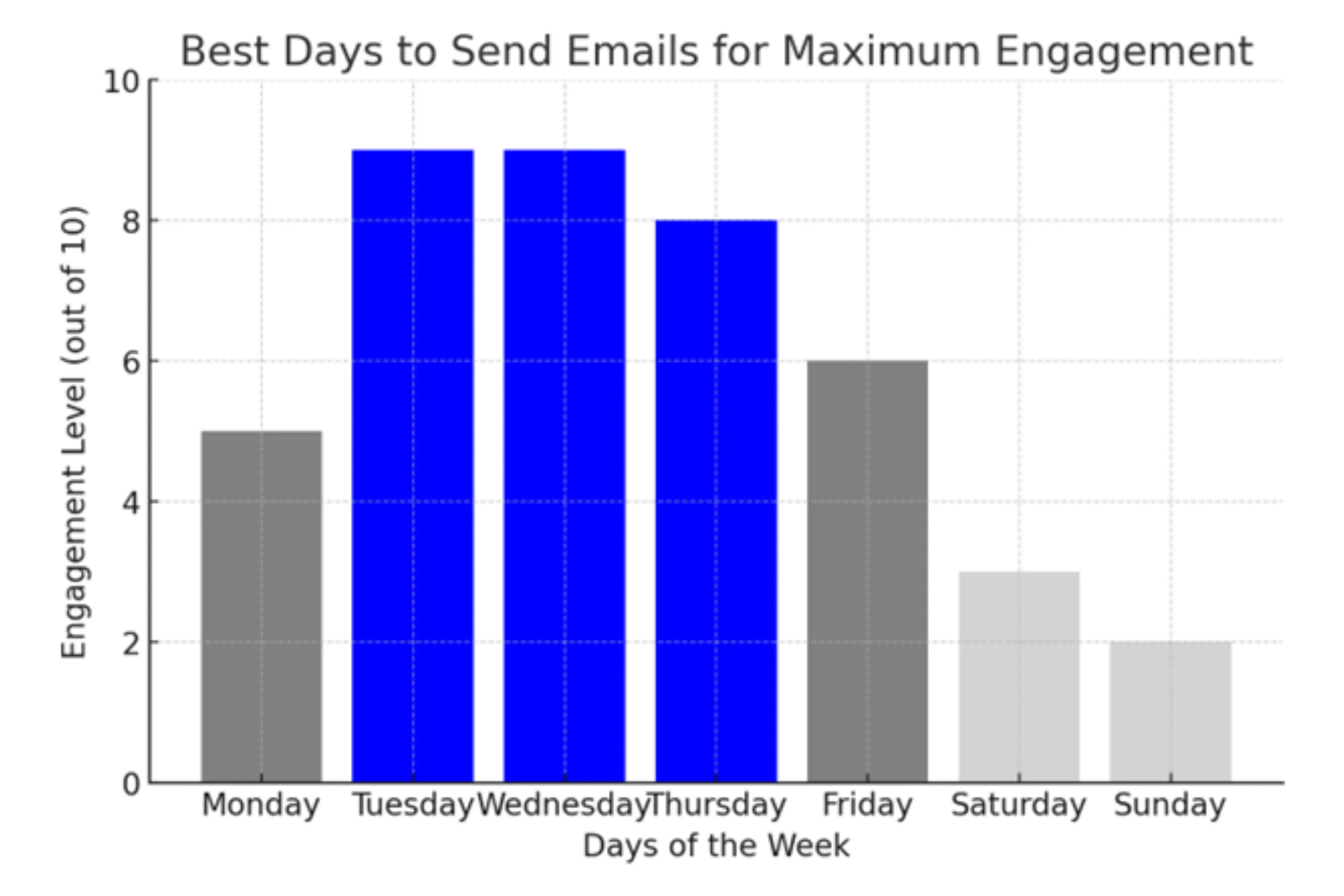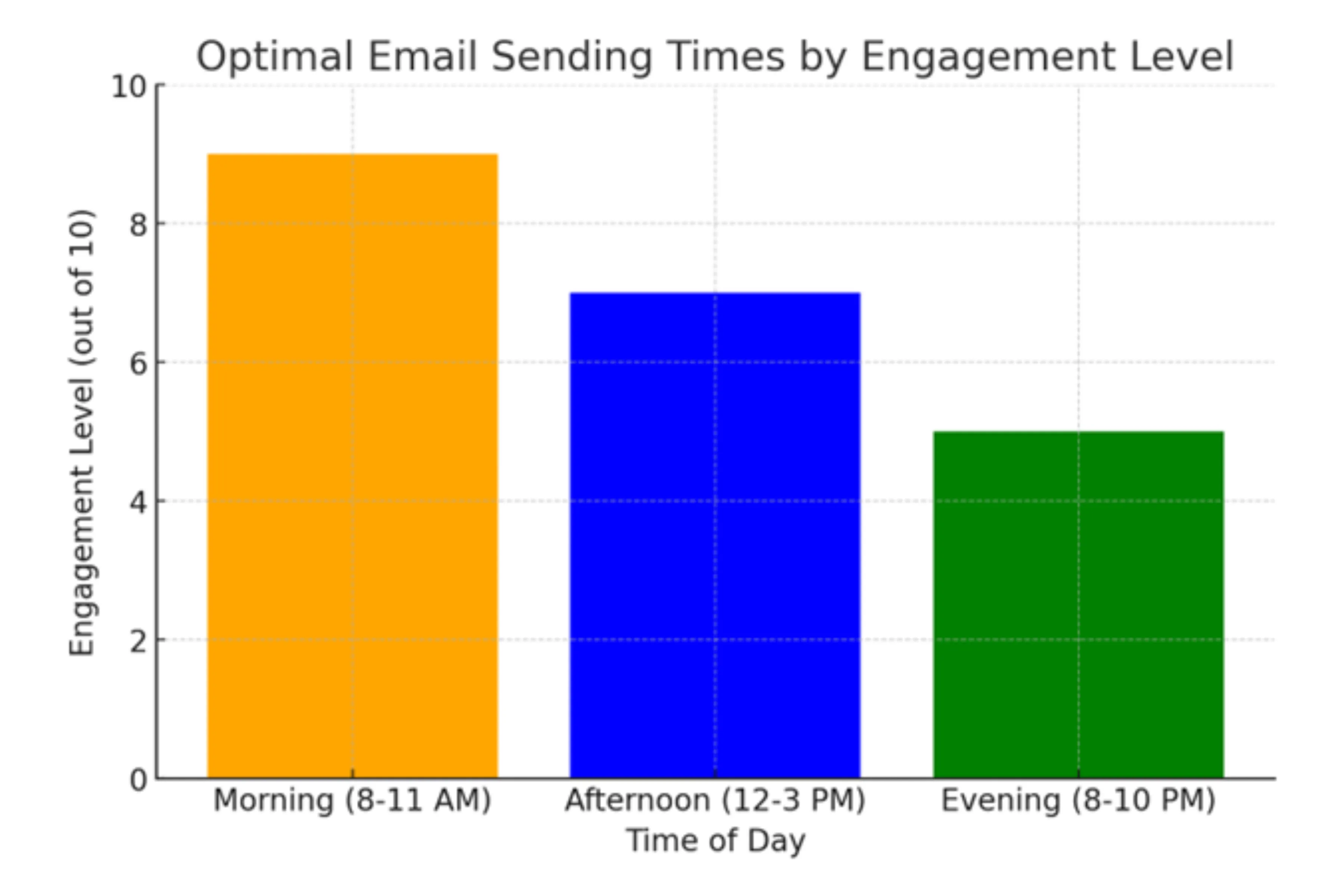
The Best Times to Send Emails During the Week
Learn the best time of day to send marketing emails, backed by research, to boost engagement and drive better results in your email marketing campaigns.
Why Email Timing Is Critical in Successful Email Marketing
Best Times to Send Emails Based on Current Data
Why Email Timing Makes or Breaks Your Campaign
Email Timing: Impact, Challenges, and Solutions
Future Trends in Email Timing
FAQ: Email Timing for Maximum Engagement
Implementing Effective Email Timing Strategies
Email timing is key, and this article will show you the best times to send emails. Studies have found that when you send an email can greatly affect its success. In email marketing, timing is everything. The right time to send an email can make your campaign succeed or fail.
With the right timing, you can see better open rates, more engagement, and more conversions. Whether you're experienced or new to marketing, knowing the best times to send emails is vital. The best times can change based on your audience and industry. But with data, you can make your email marketing better and get better results.
By picking the best times to send emails, you can make your email marketing more effective. Finding the best times for marketing can be tough, but with the right strategy, you can succeed. In this article, we'll look at why timing matters and give you data on the best times to send emails.

Why Email Timing Is Critical in Successful Email Marketing
Email timing directly influences the effectiveness of your campaigns by impacting:
- Open Rates: Emails sent at the right time are more likely to be opened.
- Click-Through Rates (CTR): Strategic timing ensures recipients engage with your content.
- Conversions: Delivering messages when recipients are most receptive increases the likelihood of actions like purchases, sign-ups, or downloads.
Poorly timed emails can lead to missed opportunities, decreased engagement, and even unsubscribes. Optimizing email timing ensures your message reaches the audience when they are ready to engage.
Best Times to Send Emails Based on Current Data
Timing is key when it comes to sending emails. The right times can make your marketing campaigns more successful. Research shows that certain times of the day and week work best for emails. Knowing these times can boost your campaign's effectiveness.
Looking for the best times to send emails for marketing? Data suggests mornings and afternoons are the best. Sending emails then can help more people open and read them.
Best Days to Send Emails
Tuesday, Wednesday, and Thursday are consistently the best days for email engagement. Emails sent on these midweek days avoid the Monday backlog and the weekend lull, leading to higher open and click-through rates.

Optimal Morning Send Times
Studies suggest that the best morning time to send emails is between 8:00 AM and 11:00 AM, with the peak engagement occurring between 9:00 AM and 10:00 AM. Many people check their emails during their morning routine, making this a prime window for sending messages. This is when they are starting their day and are more likely to engage with new emails.
Afternoon Email Performance Windows
Emails sent between 12:00 PM and 3:00 PM also perform well, as people tend to check their emails during lunch breaks or short afternoon pauses. This window aligns with the midday peak (12:00 PM - 2:00 PM) when recipients are more likely to be scrolling through their inbox while taking a break.
Evening Email Opportunities
For certain audiences, sending emails in the evening between 8:00 PM and 10:00 PM can also yield good results. As people wind down and check personal emails, engagement rates can increase.

Industry-Specific Timing Variations
Email performance varies by industry. B2B emails generally perform best during standard business hours on weekdays, whereas B2C emails may see better engagement on weekends when consumers have more free time. Tailoring your send times to your audience’s habits ensures better campaign success.

Time Zone Adjustments for Global Audiences
If your audience spans multiple time zones, scheduling emails based on the recipient’s local time zone is crucial. Using automated time zone optimization tools ensures that your emails arrive at the right time for maximum engagement.

Why Email Timing Makes or Breaks Your Campaign
Email marketing is key to any digital strategy. Timing is a big factor in its success. The right time to send emails can boost open rates and engagement by up to 20%. It's vital to know how timing affects your campaign's success.
Timing is everything in email marketing. The right moment can make a huge difference in whether your email is opened, read, and acted upon. Understanding your audience's behavior and preferences helps find the best times to send emails. By analyzing data, you can find the optimal times to send your emails and increase their impact.
- The day of the week: Some days are better for higher open rates and engagement.
- The time of day: Sending emails at the right time can catch your audience when they're most active.
- The audience's time zone: Consider your audience's time zone to send emails at the best time for them.
Email Timing: Impact, Challenges, and Solutions
The Impact of Email Timing on Open Rates
Understanding how email timing affects open rates can improve your strategy. The right timing can increase open rates, engagement, and conversions.
Common Challenges and Solutions in Email Timing
Challenge: Overcrowded inboxes lead to lower visibility.
Solution: Use compelling subject lines and preheaders to stand out, and send emails during non-peak hours.
Challenge: Diverse audience preferences make it hard to find a one-size-fits-all timing.
Solution: Segment your audience and implement dynamic timing strategies.
Challenge: Evolving behaviors require constant recalibration.
Solution: Continuously monitor trends, test strategies, and adapt based on data.
Future Trends in Email Timing
As we move further into 2025, the future of email timing will revolve around:
- Hyper-Personalization: Leveraging AI to schedule emails at an individual recipient’s optimal time.
- Real-Time Adjustments: Adapting send times based on real-time engagement data.
- Omnichannel Integration: Synchronizing email timing with other channels like SMS, push notifications, and social media for a cohesive marketing strategy.
FAQ: Email Timing for Maximum Engagement
How do I find the best timing for my audience?
Analyse past data, segment your audience, and A/B test different times to determine what works best.
What are the best time to send email campaigns during the week?
The best time of day to send email are: Morning: 9:00 AM to 11:00 AM and Afternoon: 1:00 PM to 3:00 PM
How does email timing impact open rates?
Email timing greatly affects open rates. Emails sent at the best times can boost open rates by up to 20%. This is because people are more likely to check their emails during work hours or weekends.
How can I implement effective email timing strategies?
To use effective email timing strategies, first understand your audience. Use data to find the best time of day to send marketing email. Then, test different times to see what works best for your campaign. By knowing how timing affects emails, you can make your email marketing more effective.
Implementing Effective Email Timing Strategies
Email timing is key to a successful email marketing campaign. Knowing when to send emails can lead to better results. It can also increase open rates and boost engagement.
To get it right, start by understanding your audience. Use data and research to find the best times to send emails. Don't forget to test different times to see what works best.
Keeping up with trends and optimizing your timing can elevate your marketing. The goal is to create a strategy that speaks to your audience. With the right timing and a solid plan, you can drive conversions and achieve your goals.
Also read

Maximize Presidents Day Email Success: Expert Tips and Tricks
Unlock the secrets to effective Presidents Day email campaigns with expert tips and tricks that maximize engagement and boost your sales this holiday!

5 Hacks to Boost Your Email Marketing ROI Through Strategic Campaigns
Discover how to measure and improve email marketing ROI with 5 effective hacks. Optimize your campaigns for better performance and higher returns.
Let's keep in touch
Sign up for our weekly email marketing newsletter and Mailzzy updates.
For more details, review our Privacy Policy








